Mrs. Karine Bonneval
Using chromatography on paper, Karine meticulously records the seemingly fragile but actually very profound connections between humans and the world of plants, in a picture of a modern city.
Telling stories about flowers
At the Hoa Tay exhibition by Ms. Karine Bonneval (55 years old) held at the end of July in Ho Chi Minh City, a slice of memory from a Vietnamese participant in the project attracted the attention of visitors: "My childhood was associated with a small village in the West, where everything revolved around water. Along the river there were many types of edible wild vegetables, such as water hyacinth - a plant that has become a part of cultural memory.
I also remember the times I rowed the boat with my father to pick the wild flowers to cook. In the city, every time I saw aquatic plants in the lake or along the river in the middle of the city, I felt my heart soften, as if I were connected... The connection between people and plants is gradually fading in the cycle of modernization...".
Artist Karine Bonneval takes a photo with attendees at the Hoa Tay exhibition - Photo by NGOC DONG
At the exhibition, Karine displayed 25 wind chimes she handcrafted from Vietnamese clay, more than half of which contained stories about flowers in Vietnamese memories.
Previously, since June, Karine has been in Ho Chi Minh City to carry out her project through "Villa Saigon" - an art residency program (logistical and financial support) for artists of French nationality or living in France, to promote artistic dialogue between France and Vietnam.
For nearly a month, Karine invited people living in Ho Chi Minh City to participate in her project by telling her a story related to their favorite flower.
In each conversation lasting about 30 minutes, the female artist sat opposite, quietly listening to each memory being evoked, each emotion being conveyed through stories about water hyacinth, sesbania, royal poinciana, magnolia...
Those sediments became the material for Karine to create wind chimes, with the bell dome molded from Vietnamese clay, inspired by the shape of the flower petals in the story.
The bell tail is a thin strip of paper where the flower's color is reproduced using chromatography on paper - a method invented around the 1950s, when people did not have modern electronic devices like today, to analyze soil quality and components such as fungi, minerals, proteins... in the soil.
Artist Karine Bonneval guides participants through chromatography at her exhibition and workshop Hoa Tay - Photo by NGOC DONG
Although inspired by an age-old method, Karine spent months experimenting with paper, materials, weights and proportions to find a way to apply it to pollen and petals, turning it into an original creation, closely linked to her artistic practice.
For the Flower Hand project, Karine uses that technique to reveal the pigments hidden deep within each petal. It’s a process that’s both scientific and artistic, she explains.
First, Karine soaks the chopped petals in a special solution, then drains off the remains and retains the liquid, which is saturated with the essence of the flower. Next, she dips a special paper that has been treated with diluted silver nitrate, a light-sensitive compound that fixes the color when exposed to sunlight.
Over the course of about 50 minutes, the pigment from the solution gradually spreads across the paper. The paper is then left in the sun for a week to fully stabilize. The result is unique flower “portraits,” as Karine calls them, where layers of color, veins, and shades reveal the unique chemical compositions of each flower.
Artist Karine Bonneval guides participants through chromatography at her exhibition and workshop Hoa Tay - Photo by NGOC DONG
"What's special here is that each flower produces a different range of colors and patterns. Even the same flower species grown in different places can produce different colors, because soil, water quality and many other factors can affect the colors displayed in the chromatogram," the artist shared.
A small, sun-filled room on the third floor of a house in the heart of Ho Chi Minh City has become Karine's creative workshop, where she diligently processes each flower petal, mixes chemicals and kneads clay to shape each wind chime.
Each wind chime is seen by her as a small dot on a map that holds the emotions of the city's residents, formed from their own memories and familiar flowers.
Each work in the project takes a long time to create, because in addition to processing the petals, Karine also has to create it with clay and then fire it twice. However, for Karine, the meticulous, multi-day process of working on each work helps her adjust her life rhythm and connect with nature.
"For me, using manual techniques is very important. This is a way for us, modern people living in a fast-paced life, to be closer to the rhythm of plants," Karine shared.
Artist Karine Bonneval guides participants through chromatography at her exhibition and workshop Hoa Tay - Photo by NGOC DONG
Reminder of nature in the city
In big cities, it’s easy to feel disconnected from the plant world, but plants are essential to our lives. They provide oxygen, shade, nutrients and healing properties, says Karrine.
"Through this sound installation, I hope to gently remind people of those close and vital connections, a reminder of nature, even when we are living in the middle of a bustling city," the artist confided.
In addition to collecting flowers from the stories of the city's residents, Karine also wandered around many places, picking up fallen flowers to bring into the project, as a way to help her explore the city where she was staying.
The French artist said she had always wanted to come to Vietnam, but if she came as a tourist, she thought she would not have the opportunity to interact with and understand the local people. It was not until she came across the Villa Saigon program of the French Institute in Vietnam that she decided to apply and was selected.
Wind chimes created by artist Karine Bonneval at her residence - Photo: NGOC DONG
"Vietnamese people have a very strong traditional connection with flowers, especially during Tet and ancestor worship ceremonies. These rituals represent a special cultural connection with plants, very different from what I have seen in Europe," Karine Bonneval said, explaining why she carried out the Hoa Tay project in Vietnam, which is also home to many famous flower villages, while many flowers in France are often imported from abroad.
"I have a hunch that the deep interest in flowers is deeply ingrained in the Vietnamese memory. In a rapidly developing and highly urbanized city like Ho Chi Minh City, I am curious to find out whether that connection is still as strong as in rural areas or more traditional places," she shared.
Another thing that the French artist found extremely interesting was that after researching, she learned that in Vietnamese there is a concept called "hoa tay", which coincidentally matches the way she makes wind chimes with her hands.
"That's how inspiration comes. It comes from ourselves, from what we are doing, and from the way our mind connects everything together and urges us to do it," Karine confided.
Each wind chime that is created carries not only the storyteller’s memories but also the many emotions of the artist who created them. Karine said she was truly moved by the memories that people shared.
The work is displayed at the exhibition Hoa Tay by French artist Karine Bonneval - Photo by NGOC DONG
"For over ten years, I have been collecting stories related to plants and flowers. This Hoa Tay project has helped me gain a deeper understanding of how ecological and cultural factors intertwine in the urban environment.
This experience also helped me to better shape my approach to memory, biodiversity and transmission through sensory and poetic forms - Karine confided - Indirectly, this project further reinforced my desire to continue researching art and science, while remaining involved in community activities".
Before coming to Vietnam, cuisine was the first thing she knew about this country because Vietnamese food is very popular in France.
"Coming to Vietnam has given me the opportunity to experience firsthand the diverse lifestyles of the people here. I have had many meaningful conversations about the ecology, culture and beauty of Vietnam.
I also met many young people full of aspirations for a sustainable future, who are deeply aware of the fragility of nature and the importance of preserving the quality of life for all living beings. I hope I can return soon and continue to cooperate with them," Karine shared.
The French artist said she will spend the last days of her stay visiting places she has always wanted to visit in Vietnam. Afterwards, her special wind chimes – made from flowers, soil and the Vietnamese spirit – will return to France with her, with the hope that one day they will appear at an international exhibition.
"I want to fully document my work in photos and share them on my website and social networks, so that I can introduce them to curators for upcoming exhibitions," the artist confided.
Exhibitions in many countries
This is not the first time Karine has collected flowers and pieces of memories into her project. For the past 10 years, the artist has been carrying out a larger project called Memory with Plants and Flowers in many places, most recently in Quebec (Canada) two years ago.
Karine Bonneval graduated from the Angoulême National School of Fine Arts and the Strasbourg School of Decorative Arts in France. Her projects often collaborate with prestigious scientific groups such as the Institute for Diversity, Ecology and Evolution of Organisms (IDEEV) or Cornell University (USA), to explore new ways for humans to interact with nature and the living world. Her work has been widely exhibited in many places around the world such as France, Germany, the United States and Argentina.
Back to topic
NGOC DONG
Source: https://tuoitre.vn/nghe-si-nguoi-phap-karine-bonneval-luu-giu-ky-uc-hoa-cua-nguoi-viet-20250826164604328.htm


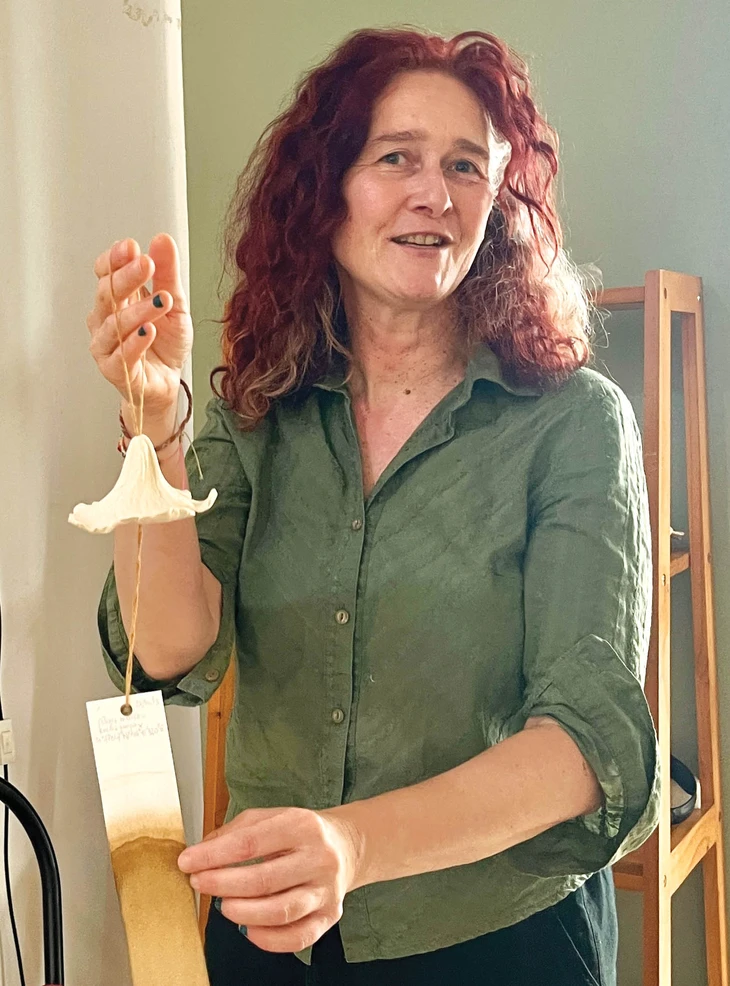
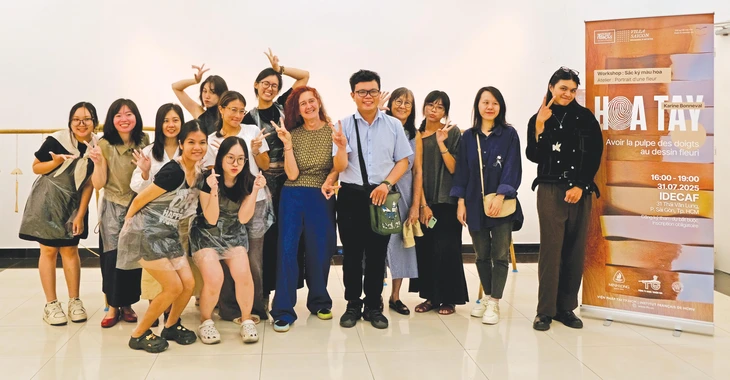
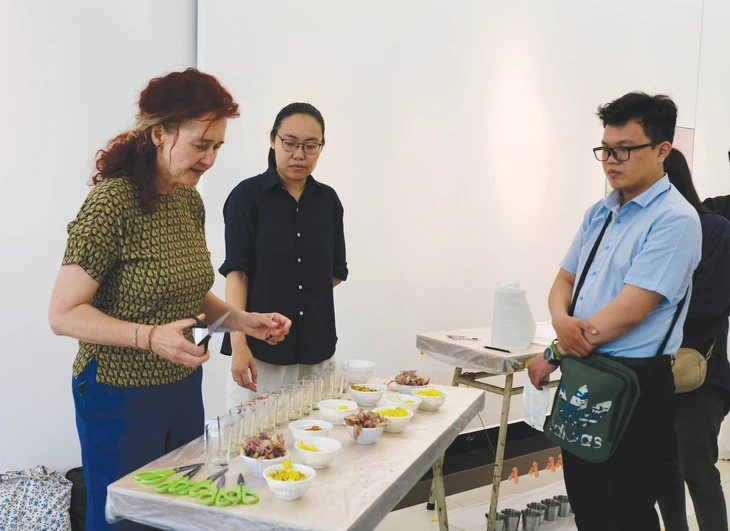
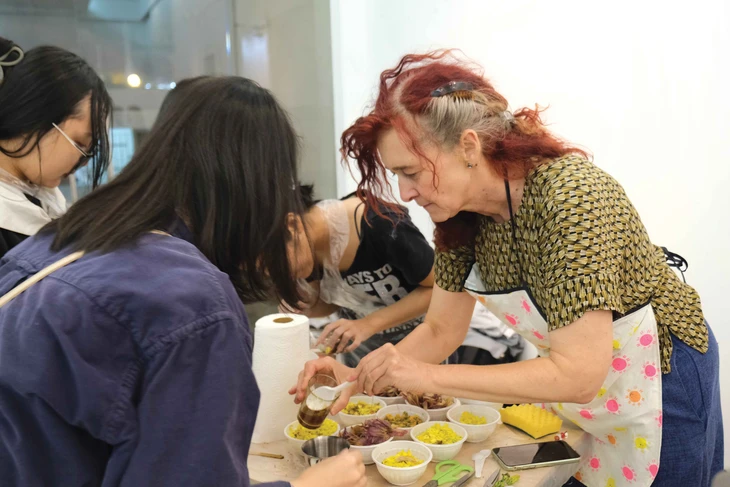
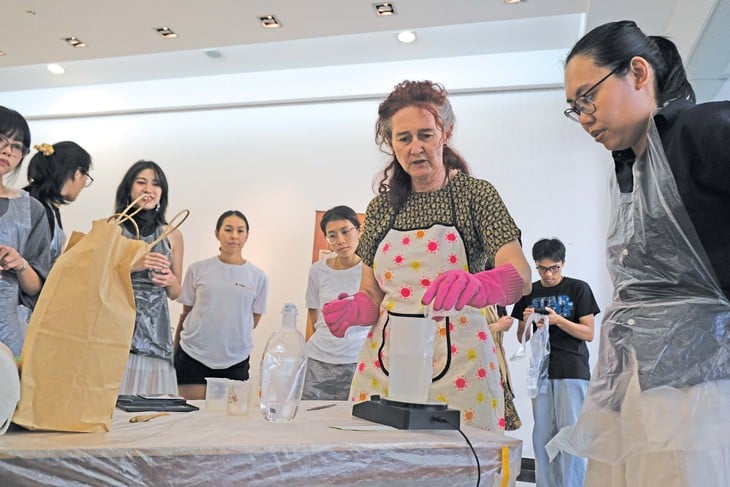
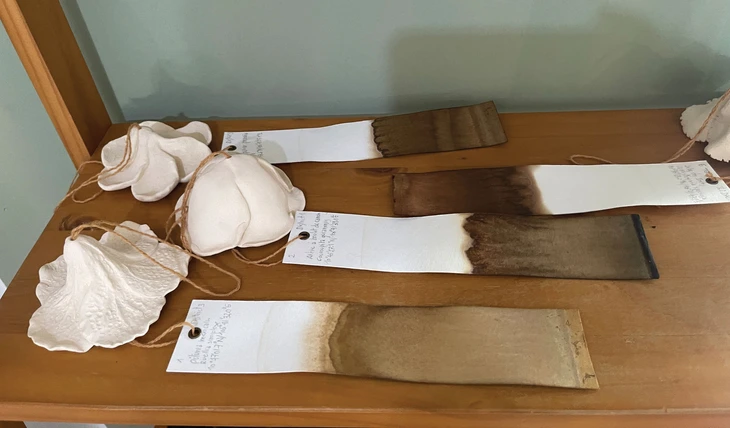
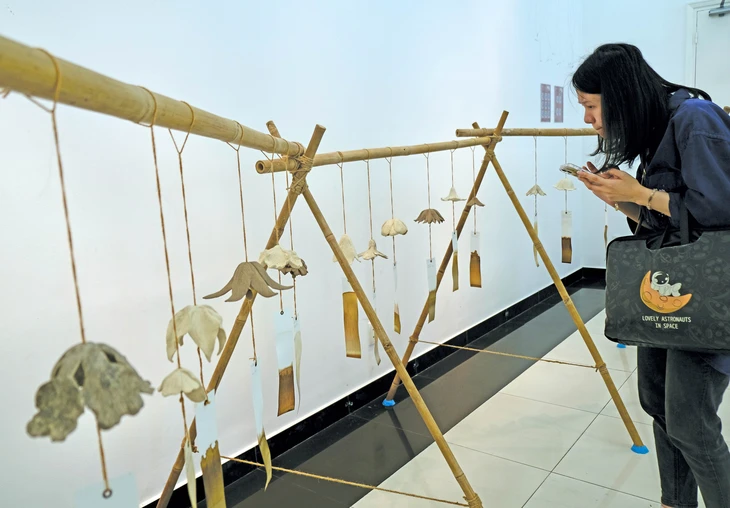

![[Photo] Prime Minister Pham Minh Chinh chairs a meeting of the Government Standing Committee to remove obstacles for projects.](https://vphoto.vietnam.vn/thumb/1200x675/vietnam/resource/IMAGE/2025/10/06/1759768638313_dsc-9023-jpg.webp)
![[Photo] Prime Minister Pham Minh Chinh chaired a meeting of the Steering Committee on the arrangement of public service units under ministries, branches and localities.](https://vphoto.vietnam.vn/thumb/1200x675/vietnam/resource/IMAGE/2025/10/06/1759767137532_dsc-8743-jpg.webp)



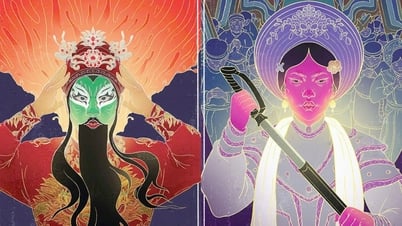
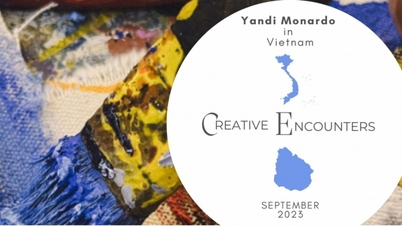





















































































Comment (0)